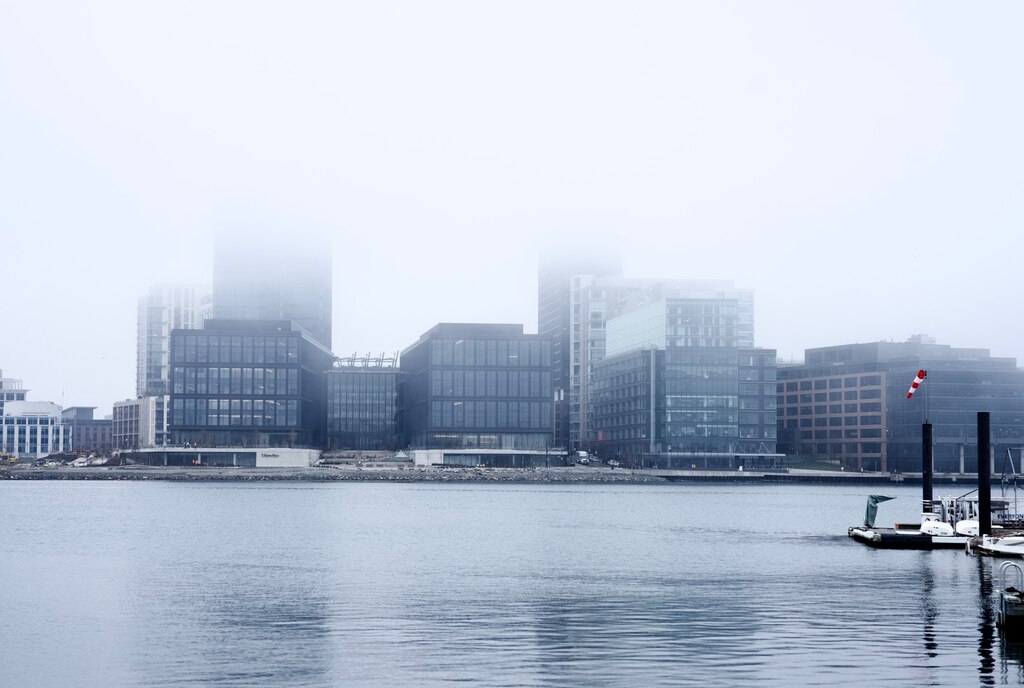Fog descended on Annapolis — silent, cool and wet.
It was the first gray morning of winter, even though the solstice — the traditional start of the season — was still 10 days away. The spires and domes of downtown ceased to exist in the murk over Spa Creek, leaving only a glimpse of Maryland’s state capital in the distance.
Live on the Chesapeake Bay long enough, and you get used to this sort of thing. You might even revel in a particularly foggy morning spreading from the water.
The scientific term is advection fog. Warm, moist air crosses the cold bay and its rivers from December through March, and airborne water vapor condenses into droplets — creating banks of enveloping nothingness.
The Baltimore Banner thanks its sponsors. Become one.
We’re not in Cape Disappointment, Washington, where it’s foggy for three months a year. No one is working to harvest fog to ease drought-starved farms and no one I know of studies Chesapeake fog.
Someone should.
Evidence suggests we’re seeing more fog, which sometimes drops visibility to less than a mile. Bridges run by the Maryland Transportation Authority have recorded more than 100 fog warnings in each of the last six years.
I wonder if climate change may be making fog more dangerous on the bay.

Early next year, an Eastern Shore woman faces trial in Centerville for a Bay Bridge accident last January that involved 42 cars and trucks and injured about a dozen people. Police charged her with drunken driving but have yet to release the results of a monthslong accident investigation.
The Baltimore Banner thanks its sponsors. Become one.
Witnesses that day, however, have said the crash occurred in a wall of fog, making it impossible to see traffic slowing behind an erratic driver.
I’m not a meteorologist. But if we’re seeing wild temperature swings that flood the area with warm air, it’s not much of a leap to see why more fog is coming off the bay.
After the Bay Bridge crash, I asked the MDTA about its fog warning system and whether officials had noticed more alerts.

After some back and forth, public information specialist Christopher Imms helped me nail down terms for a computer search that might answer the question: Are fog warnings increasing on the Bay Bridge?
Officials released results to The Banner in late March that showed an increase. But they indicated they could have done a bigger search.
The Baltimore Banner thanks its sponsors. Become one.
That’s when then-Banner data journalist Ramsey Archibald suggested revising my request. If MDTA can search for one bridge, why not all of them? And why not go back to the start of digital records in 2002?
In May, we got an answer. Maryland’s toll bridges recorded 141 fog warnings in the state in 2023, according to the data analyzed by Archibald.
That was the third-most in a year since 2002, the first full year of data available, and the sixth consecutive year with at least 100 fog warnings.
From 2018 to 2023, the state’s largest bridges averaged nearly 146 annual warnings, up from an average of fewer than 102 annual fog events the previous six years.
The average was fewer than 91 per year over the decade before that.
The Baltimore Banner thanks its sponsors. Become one.
Fog on the bay is not new, even if records of fog warnings and climate change science are. Anecdotal evidence hints that these numbers represent either a radical change in fog occurrence or in awareness.
Forty years ago, author Mark Jacoby spent more than a year with Maryland watermen on their boats in the bay. He wrote well-regarded books for Maryland Sea Grant, part of the University of Maryland.
In a 1984 pamphlet on bay weather, he listed nor’easters and fog as the most dangerous weather on the bay in winter. Compare his anecdotal figures with the state data.
“We can expect 30 to 40 days of fog,” he wrote.
We’ve already had a few foggy days since Dec. 1, the start of meteorological winter. Not all fog alerts, though, are in the coldest months.
The Baltimore Banner thanks its sponsors. Become one.
Warm water and cool air can cause evaporation fog — technically a different scientific phenomenon, but the same thing if you’re driving through it.
The winter solstice arrives at 4:21 a.m. Saturday, marking a change in the celestial cycle. It’s the moment when daylight hours are at their shortest, the start of the year’s coldest months.
You may doubt this is the start of deep fog on the bay. But consider this.
The MDTA’s data showed that three times in the last 10 years, fog warnings topped 100 in the first three months of the year — right after the solstice. The warnings neared 200 in 2020 and 2018.
Ramsey found additional fog data involving weather monitoring stations. County-level fog data isn’t available every year, but Ramsey discovered that in the years for which it was available, nine of the state’s 24 counties recorded periods of dense fog.
The Baltimore Banner thanks its sponsors. Become one.
They were most common in Anne Arundel and Cecil counties, with the city of Baltimore and Charles County also seeing significant numbers. Fog on the Eastern Shore is worse than in those counties.

I’ve been sitting on this data since May, so long that Ramsey moved home to Alabama before we could publish it. Who cares about fog while the sun shines and the water is warm? Now, the fog is back.
Hopefully, some meteorologist who reads this will be curious enough to dive deeper into why.
Maybe we need to rethink how we describe winter, with climate change making snow a rarer thing in Maryland.
We could call it the season of fog.




Comments
Welcome to The Banner's subscriber-only commenting community. Please review our community guidelines.